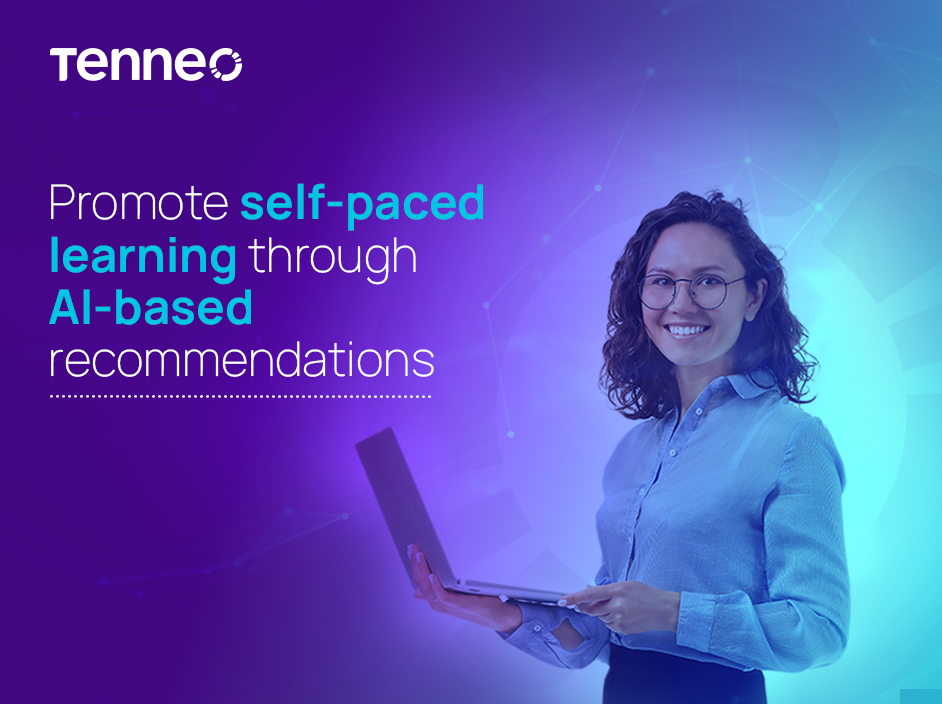
How does Tenneo LMS help IT/ITES organizations
June 26, 2023
Buckle up! Tenneo Conclave is Back with its Bangalore Chapter
July 6, 2023
How does Tenneo LMS help IT/ITES organizations
June 26, 2023
Buckle up! Tenneo Conclave is Back with its Bangalore Chapter
July 6, 2023The Potential, Promises & Pitfalls of Using Generative AI for Creating Learning Content

Generative AI is the new buzzword today. Everyone has witnessed the growing popularity of the AI language model – Chat GPT. But is the hype real? Yes, it is! In 2021, the Generative AI market was valued at over USD 7.9 billion and is expected to surpass USD 110.8 billion by 2030.
From fast content generation to creating learning pathways, Generative AI offers numerous advantages for employee learning and development. However, it is important to delve into both the pros and cons to understand the full potential and limitations of Generative AI in learning content creation.
The Potential & Promises of Generative AI in Learning Content Creation
- Efficient Content Generation
Generative AI can significantly reduce the time and cost involved in content creation for L&D leaders and corporate trainers. AI algorithms can automate the generation of training material, including presentations, e-learning modules, and interactive simulations, saving valuable time and resources. This efficiency allows L&D leaders and trainers to focus on strategic planning, program design, and other high-value tasks. - Faster Learning Content Delivery
Generative AI enables L&D leaders to expedite the delivery of learning content to employees through the LMS. AI algorithms can rapidly generate and quickly deploy learning content with on-demand access. This accelerated content delivery ensures that employees can access relevant learning resources when they need them, enhancing their productivity and enabling just-in-time learning. - Adaptive and Continuous Learning
Generative AI algorithms can analyze learner progress and provide real-time feedback, enabling trainers to dynamically adjust training content and delivery methods. This adaptability ensures that employees receive the most effective and engaging learning experiences, leading to improved knowledge retention and skill development. - Creating a Basic Learning Structure
Generative AI can assist L&D leaders and corporate trainers in establishing a solid foundation for learning programs. It can generate a basic learning structure for the LMS that includes essential components such as learning objectives, modules, assessments, and progression paths. This provides trainers with a starting point and framework for developing comprehensive training programs. With this foundation in place, trainers can focus their efforts on customizing and refining the content to meet specific organizational needs and learning goals. - Boosting LMS Adoption
One of the major roadblocks to LMS adoption has been the lack of enough learning content. However, with Generative AI coming into the picture, L&D leaders can create huge volumes of learning content at scale. Moreover, with Generative AI's ability to deliver personalized and user-centric learning content, organizations can effectively boost LMS adoption, leading to improved employee skills, performance, and overall organizational success.
The Possible Pitfalls of Generative AI in Learning Content Creation
- Quality Control and Accuracy
Generative AI relies heavily on the data it is trained on, and if the training data is incomplete or biased, it can lead to inaccuracies or misinformation in the generated content. Maintaining quality control and ensuring the accuracy of the generated learning content becomes crucial, as AI algorithms may sometimes produce content that is factually incorrect, outdated, or lacks appropriate context. - Overreliance on Algorithms
There is a risk of overreliance on Generative AI algorithms for content creation, leading to a loss of human expertise and judgment. Educators and trainers may become too dependent on AI-generated content, neglecting the need for their own insights, adaptability, and pedagogical expertise. - Limited Creativity and Innovation
While Generative AI can generate vast amounts of content efficiently, it may lack the ability to produce truly innovative and creative learning materials. AI algorithms work based on patterns and existing data, which may limit their capacity to generate truly groundbreaking or out-of-the-box content. - Ethical Conundrum
Generative AI raises ethical concerns related to data privacy, bias, and transparency. The algorithms rely on vast amounts of data, including personal learner data, and it is crucial to handle this information responsibly, ensuring privacy and compliance with data protection regulations and ensure transparency in the use of AI-generated content.
Final Word
Generative AI presents immense potential and promise in revolutionizing the creation of learning content. However, it is essential to navigate the potential pitfalls associated with Generative AI. Striking a balance between AI-generated content and human expertise is crucial to ensure the delivery of high-quality, engaging, and effective learning experiences.
By understanding the potential and challenges of Generative AI, L&D leaders can harness its power responsibly and leverage it as a valuable tool in creating impactful and innovative learning content.
